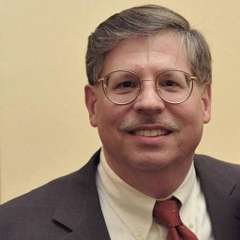Does any orchestral music by Beethoven exist that is actually rare? Well, yes and no – and for his all-Beethoven program with the Baltimore Symphony Orchestra, principal guest conductor Markus Stenz showed us how that could be the case. The twist started early with the Leonore Overture... but in this case, it wasn't the familiar one most audiences know, but rather Beethoven's Leonore Overture no. 2, the second of the composer's four attempts to pen "just the right" opening to his single opera.
For those who know the famous no. 3, this was an opportunity to experience familiarity in a fresh new way. Is it a better version? Most definitely not, but it's worthy Beethoven nonetheless, and one suspects it might have achieved similar success had it been the composer's "final word" on the music. The piece suffers from the inevitable comparisons to the better-known no. 3; the music seems more episodic and somewhat disjointed. Also, the concluding section of the overture following the stentorian trumpet calls is a disappointment, as if Beethoven decided he needed to wrap things up several bars too early.
Stenz and the Baltimore musicians played the piece with conviction, the famous trumpet calls being just one of many passages where instrumental solos were played to perfection. Stenz conducts without a baton, which for some directors works perfectly fine, but I found the numerous wrist shakes, wagging fingers and other gesticulations distracting enough that I closed my eyes, which turned out to be the best way to enjoy this music.
The Piano Concerto no. 1 in C major is a misnomer in that it was composed shortly after the B flat major one that's listed in the catalogue as Beethoven's Second because it was published later. The B flat concerto resides in the classical era whereas the C major is more a breakout piece, not least in the increased instrumentation including clarinets, trumpets and timpani as well as the orchestra's more significant role in the development of the musical material in the first two movements. In today's performance, Lars Vogt blended beautifully with the orchestra. His technique was masterful, with absolutely no missed notes or other slip-ups. In the first movement, perhaps a tad too much pedal was used in places, resulting in some blurring of the musical passages; even though it's on the cusp of the Romantic era, I think this concerto still benefits from a "classical" treatment. Vogt used the last of Beethoven's three alternate cadenzas. Brilliantly conceived by the composer, Vogt captured the extemporaneous mood while at the same time achieving its purpose convincingly as the climax of the first movement.
The second movement was sheer perfection and the emotional high-point of the concerto. The rapt audience seemed spellbound. The final Rondo is one of the happiest and most tuneful movements in any Beethoven concerto. It's full of wit and humor that Vogt and Stenz really bought to the fore. What fun everyone seemed to be having!
Following the intermission, Stenz presented Beethoven's complete incidental music to Goethe's play Egmont, in which the orchestra was joined by soprano soloist Lauren Snouffer and narrator Kwame Kwei-Armah. While the overture to Egmont is familiar to most classical music lovers – one wonders how many times it has served as a filler item on recordings of Beethoven symphonies – the remainder of the incidental music is heard only rarely. One of the challenges of incidental music is in taking it outside its context, because many of the individual selections serve to support or propel the action on the stage. Beethoven's music doesn't entirely escape this, but much of it stands quite well on its own. Both numbers featuring Snouffer's effortless soprano were particularly engaging. Kwei-Armah's articulate British-accented narration struck just the right tone, and provided important context for those previously unfamiliar with either the music or Goethe's play.
The famous overture, in which Beethoven explores the many moods of the dramatic action better than the playwright may have himself, was finely realized by Stenz and the Baltimore players. The four entr'actes were also nicely presented, with each of their disparate movements revealed as being its own special little adventure.
So in all, this program delivered on its promise, delivering the full range of Beethoven: famous, sort-of famous, and the truly rare. And it did it in style.




